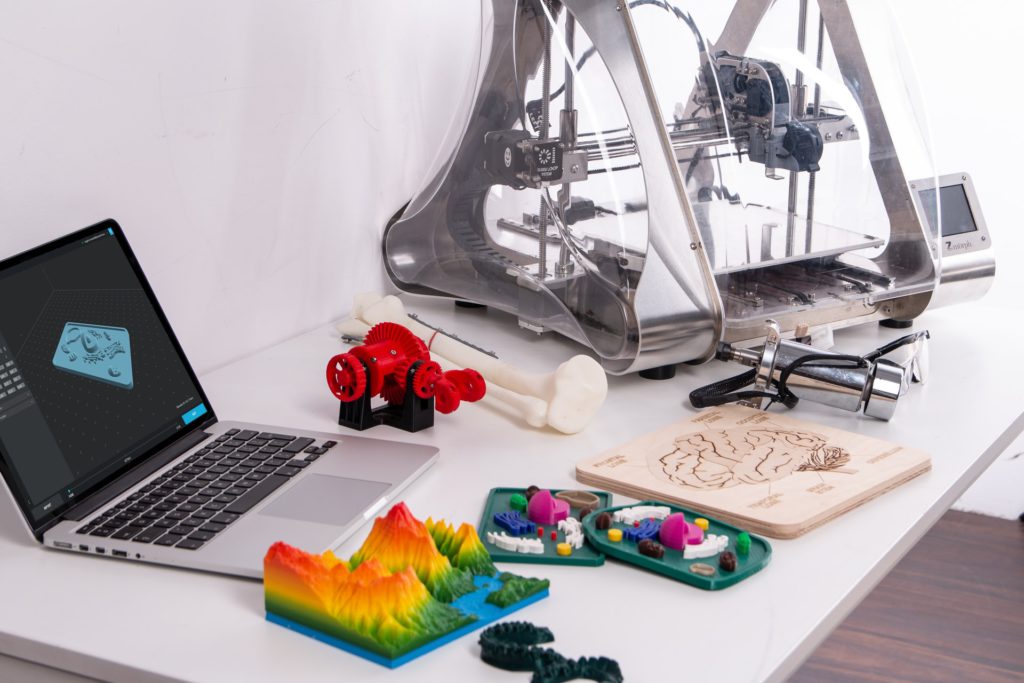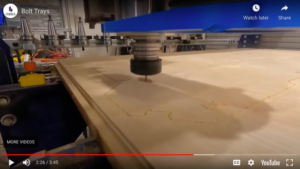What is CNC Software?
For over half a century, Computer Numeric Control (CNC) has impacted manufacturing operations globally. With the rise of computer automation, CNC was designed to allow precise control of tools and tooling to produce parts faster and more accurately than human machining.
Of course, CNC programming must be accompanied by CNC software. And this software is what creates and sends the program codes and complex instructions to the tools on a machine. With the computer controlling the machine, shops can produce precise workpieces and ensure repetitive pieces are within the same tolerance.
But CNC software doesn’t work alone. Today, other types of software are utilized to create the designs and render them for use within CNC software. Before moving on, we need to understand these terms better to fully grasp the importance of CNC software.
CAD
CAD stands for Computer-Aided Design. It’s a highly versatile software that renders designs in 2D or 3D. This saves time in the iterative process, and allows designers to make changes and adjustments on screen before production. Curves, lines, voids, and other features can be added, and designers can zoom into the interior of the design and the exterior. They can rotate it to any angle for review to correct any flaws.
CAM
Once the design parameters are completed on CAD, Computer-Aided Manufacturing CAM Software is used to take the geometrical values of the CAD design and encode the production parameters that will be used on the CNC machine. This includes tool speed, traverse speed and direction, and other movement-related data needed to drive the CNC controller. CAM converts these parameters into G-Code for use on the CNC.
CAD/CAM
As both CAD and CAM software matured, the trend emerged to combine them into a single software called CAD/CAM. This offered many advantages and meant that companies no longer needed to host two separate software programs to supply instructions to CNC machines. This reduced cost and improved consistency as the single software was designed to run in tandem.
G-Code
The instructions from either CAM software or CAD/CAM software used to instruct the CNC machine are called G-Code. G-Code—or Geometric Code— is a programming language that will give the CNC machine its path, speed, and other tasks to create optimized parts.
How Does CNC Software Work?
CNC software works by linking the tools and toolsets on a CNC machine to a computer. Using the G-Code sent by CAM or CAD/CAM software, the CNC machine instructs the tools to follow specific paths, run at certain speeds, or take other actions. These instructions are followed in a specified sequence to optimize the build and to produce the part most efficiently with the least waste.
What are the advantages of CNC software?
CNC software has many advantages. It increases the capabilities of machining beyond the range of what could be done by humans. The repeatability is also highly accurate, and it can maintain tight tolerances from piece to piece. Because a machine is doing the work with precision, production throughput is also higher than human-run machines.
CNC software is also safer. As the computer controls the tool pack, the production area can be enclosed, keeping debris and waste away from the operator. This means lower labor costs and lower overall costs. And because the equipment is computer-driven, maintenance can be reduced, and when it is required, the machine can identify the area of the problem for a faster restart.
CNC is all about computer-controlled machine tools. Because of that, there’s a lot of software to be aware of. CNC newcomers should understand that a complex software suite underpins all CNC work. As a result, both CAD and CAM software are critically important.
What is CAD?
Design has always been part of manufacturing. In the past, it required complex drawings and renderings by hand. The advent of computer technology changed that and allowed computing to be harnessed to enable design on screen.
CAD designs can be either 2D or 3D. The software allows for complex geometries, curves, lines, voids, and contours in high-definition detail. As it relates to CNC machining, CAD software today can enable the design of parts made in two, three, four, or five axes on a CNC machine, making it an essential and versatile piece of software for any CNC.
What is CAM?
CAD is only the first step in the journey of a part destined for manufacturing. CAM software takes the CAD design and interprets and deciphers it into the programming language used by the CNC. This includes machine speed, tool speed, axis order, tool path, and other critical parameters.
This geometrical data is then rendered into G-Code numerically and sequentially to drive the CNC machine and associated tools. In addition to tool speed and path, CAM software can check error-check the design for geometrical errors and even analyze the design to optimize the best orientation and path to improve efficiency and create less waste.
What is CAD/CAM?
Historically, it was common to use a CAD program for design and then transfer the files to a CAM program for the next step. But as they became more linked and critical to CNC technology, CAD and CAM were merged into a single software program called CAD/CAM.
By combining the two, the cost is lowered, and the design consistency from inception through coding is seamless. CAD/CAM is a vital combination as the world moves toward more computer-enabled production and toward initiatives such as Industry 4.0. All systems are linked and communicate with one another. But like all software, CAD/CAM has both advantages and disadvantages.
CAD/CAM Software Advantages and Disadvantages
CAD/CAM software has several advantages. First, it is highly versatile by allowing designers to zoom into the model to view interior sections. This gives users a clearer idea of the functionality of the design. CAD systems also allow cutaway views to be combined with other parts in a system to gauge interoperability.
As technology continues to blend design and manufacturing, using the two as part of a single software suite is an organic evolution that aligns with this trend. Finally, CAD/CAM software can take advantage of the more incredible processing speeds available today. This allows them to be used on PC-based platforms opening the software to new users and new ideas.
There are also a few disadvantages. The CAD portion of CAD/CAM is agnostic to practicality and end-use. Therefore, it will take any instructions as long as it fits the geometric capabilities of the program. It is left to the user to determine whether the design can stand up to real-world applications. Although there is some movement toward a single CAD/CAM standard, there are still situations where data transfer and design revision issues are still a problem.
So, with all this software in action, there is one more piece of the software puzzle called G-Code.
What is G-Code?
G-Code is the programming language that tells a CNC machine what to do and how to do it. In the case of CNC, this includes tool path, spindle speed, cutting depth on each path, axis orientation, voltage, and other variables. It allows the CNC software to smoothly send directions to the CNC controller to be executed by the tools.
How Does G-Code Work?
G-Code consists of cartesian coordinates so that tools follow the correctly optimized path at the right speed and perform a specific function on each pass. It does this through a simple coordinate system for guidance. This coordinate system contains four components. The first three – the X, Y, and Z-axis – define the 3-dimensional parameters. The fourth coordinate, known as the “F” coordinate, controls the feed rate.
Conclusion
CNC machines can perform complex machining, milling, grinding, and other manufacturing functions. They create precise, repeatable parts safely and to scale. But they do not work without the software that stretches from design through machine instruction. With this knowledge, you now know all the basics required for CNC machines. You know what CNC software is. You know what CAD/CAM software is. And you know what G-Code is. With this in mind, you can choose the best software suite for your application with the confidence that your CNC project will flow seamlessly from concept through production.


